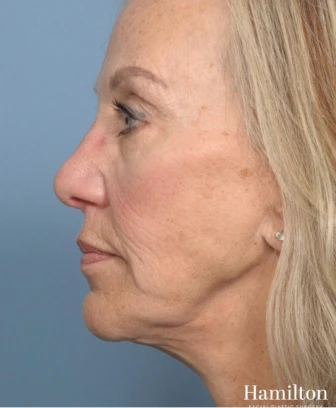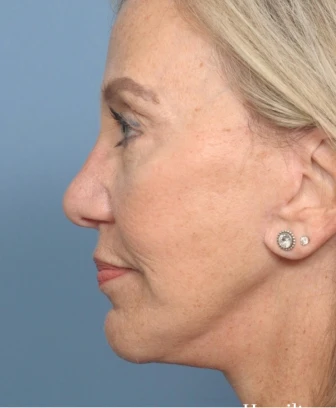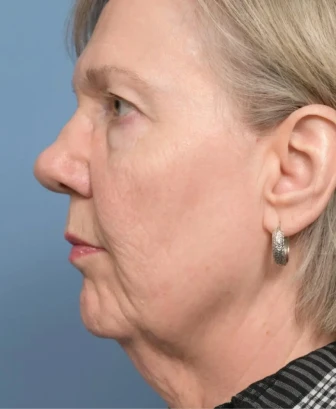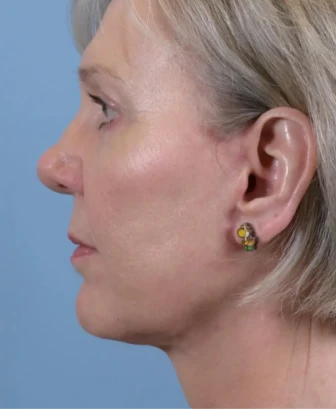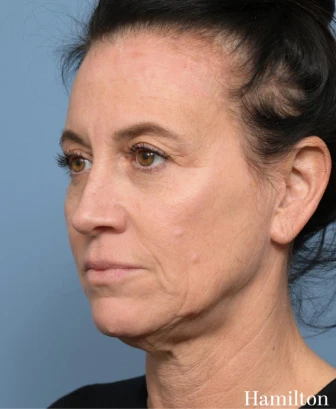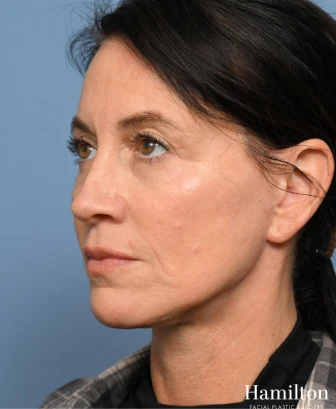By Dr. Mark Hamilton
Hyaluronic acid based dermal fillers are a safe and effective treatment option for preventing and reversing the visible signs and symptoms of aging. They are the second most common nonsurgical procedure performed, increasing in popularity, and have several types from which to choose from. These dermal fillers can be used to soften folds and lines around the mouth, plump up thin lips, add volume to hallowed cheeks and correct unwanted contour deformities- all being done in the office with minimal downtime. Most importantly, they have been proven safe when administered by a trained medical professional.
The incidence of complications with hyaluronic dermal fillers has been incredibly low, however newer fillers have been introduced that have a higher risk profile. Anytime a needle enters the body there is a small risk for infection despite proper aseptic technique. On the rare occurrence when an infection does occur, it is typically a superficial type cellulitis involving the soft tissues and skin near the injection site. These are fairly easy to treat with an oral antibiotic. Abscess formation and spread of infection can occur but are much less common. An infected skin biofilm can also occur.
Fortunately, all of these infectious complications are rare, but there are some things you can do to mitigate the risk.
Prior to the procedure, please be prepared and willing to provide a detailed history to the provider performing the injection. Pertinent history includes, but is not limited to, the following: being immunocompromised, prior skin infections, keloids or scarring, surgeries, trauma, herpes simplex virus, or if you currently have an active infection and are taking antibiotics. In addition, it is helpful to know which previous products you have received.
During the procedure all makeup will be removed in and around the areas that are being treated. Not wearing any makeup will expedite your visit. A presurgical scrubbing antiseptic agent, such as chlorhexidine or hypochlorous acid, will be used topically to cleanse the area being treated. At the completion of the procedure we ask that you please refrain from reapplying makeup for at least 12 hours as makeup can harbor bacteria and increase the risk for infection.
There are several important ways to help prevent infections from dermal fillers pre and post injection. Allergan (2018), the maker of Juvederm compiled a guide, entitled: Aseptic Technique Key Considerations for Maximizing Patient Outcomes. The following are some of the summarized recommendations:
PRE INJECTION:
- Postpone treatment if ongoing skin infections in or near the area to be treated
- Delay treatment until active viral or bacterial infections have resolved e.g. herpes simplex; sinusitis; dental disease; or ear, nose, and throat infections
- Avoid treatment immediately before or after routine medical procedures, such as: vaccinations or dental work (2 weeks)
POST INJECTION:
- Avoid makeup for 12 hours and skin care products for 24 hours
- Avoid extreme cold or heat for 48 hours, massaging the treated area, or strenuous activity
- Postpone dental procedures for at least 2 weeks after treatment
Our goal is for you to have the best possible outcomes, and to enjoy the smoothing and moisturizing benefits of hyaluronic acid based dermal fillers. We would enjoy working with you to help you look and feel your best.
If you are interested in this procedure or would like to learn more, please contact Hamilton Facial Plastic Surgery in Greenwood 317-969-8472 or Indianapolis 317-682-0803 today to schedule your consultation.
References: 1. Allergan. Aseptic Technique Key Considerations for Maximizing Patient Outcomes. 2018. 2. Cohen SR, Berner CF, Busso M, et al. Five-year safety and efficacy of a novel polymethylmethacrylate aesthetic soft filler for correction of nasolabial folds. Dermatol Surg. 2007; 33(suppl 2):222S-230S. 3. De Boulle K, Heydenrych I. Patient factors influencing dermal filler complications: prevention, assessment and treatment. Clin Cosmet Investig Dermatol. 2015; 8:205-214. 4. Wagner RD, Fakhro A, Cox JA, Izaddost SA. Etiology, prevention, and management of infectious complications of dermal fillers. Semin Plast Surg. 2016;30(2):83-86.


